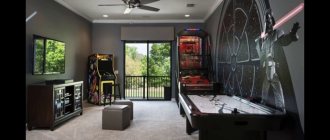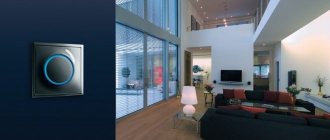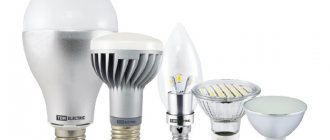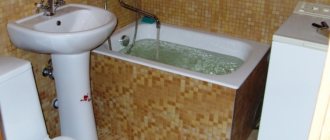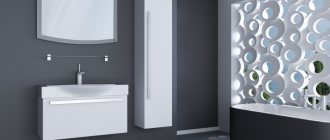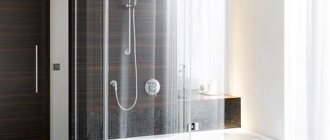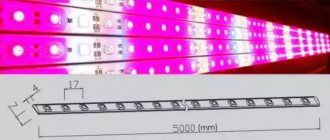Recently, in the field of indoor gardening, there has been an increasing interest in LED lamps for growboxes and LED lamps. Diodes have low power consumption, do not heat up as much as HPS, and do not require additional devices for connection. In this article we will try to understand the pros and cons of this type of lamps and understand where and what the benefits are for the gardener.
LED (Light Emitting Diode)
is a semiconductor device that distorts electrical voltage into light. The spectral range of emitted light depends on the chemical composition of the semiconductor. In appearance, this is almost an ordinary lamp with many LEDs in it. These things were invented back in 1907, but they were developed relatively recently for the needs of crop production. Despite the fact that LED lamps for plants have just entered our lives, they have already managed to create a good reputation for themselves.
How to choose LED lighting for a growbox?
Not all LED lamps are suitable for lighting plants indoors. When choosing, it is necessary to take into account the optical wavelength or, in other words, the range of the emission spectrum
. There is a direct connection between the efficiency of photosynthesis, the amount of rays received by the plant and their spectral composition. Most favorable for plants:
- blue spectrum 430–455 nm, used for lighting during the growing season (the blue-violet range helps in the creation of growth inhibitors that promote plant formation, increasing its density and strength);
- red spectrum 660 nm, used at the flowering stage of plants (the red-orange wavelength range is responsible for the development of fruits, roots, and growth of tops volume).
The remaining ranges are much less effective for backlighting.
Different types of plants, as well as stages of their growth, require different ratios of the blue and red components of the spectrum. Therefore, when choosing an LED panel or lamp, it is necessary to take into account the emission spectrum. It is better to choose multispectral LED lamps, otherwise you will have to buy one unit for the vegetative stage of plant development and a second one for flowering.
The second important characteristic when choosing an LED is power
. It must be selected based on the required lighting area. Let's look at the common types of LED devices and their characteristics:
- Phytolamps with a power of 5-15 W are well suited for illuminating one or two plants, illuminating an area of up to 0.5 square meters; Phytolamps with a power of 21-27 W – cover an area of up to 0.6-0.65 square meters with light.
- A round LED phytolight with a power of 80-150 W is perfect for additional lighting of plants.
- Rectangular LED lights with a power from 150 W to 800 W are the best solution for fully illuminating plants, without the use of natural light.
- Phyto tapes are a solution that offers an advantageous combination of price and quality and is suitable only for supplementary lighting of plants; they cannot replace natural lighting.
Which type to choose
Conventional incandescent lamps do not give good results when growing seedlings. They heat up quickly and dry out the air. Young plants overheat and become weak. Therefore, special lamps are used for illumination.
Illumination of plants with a sodium lamp
Sodium
High-pressure sodium lamps are used to illuminate young crops. Among other lighting devices, they are considered the brightest. The main advantages of a sodium electric light source are:
- ensuring a stable supply of light;
- long service life;
- lighting efficiency when growing seedlings.
Such lamps emit yellow-orange light, which is not irritating to the eyes. Thanks to this, sodium lighting devices can be used at home.
Many lamps are made with special mirror reflectors. With this addition you can evenly distribute light over a large area.
The disadvantage of such artificial light sources is the high price of the product. Also, lamps cannot be used during power surges.
Sodium lamp for illuminating seedlings
Photoluminescent
The effectiveness of phytolamps for seedlings is determined by the following indicators:
- high power - to fully illuminate the greenhouse, you can use only two photoluminescent lamps;
- durability;
- compactness.
When purchasing such a lamp for lighting plants, you should pay attention to the presence of reflectors, the angle of light dispersion, power and brightness.
Without special reflectors, a phytolamp with its lilac-pink glow can cause headaches and irritate the eyes.
Luminescent
Fluorescent lamps are the most common option for illuminating seedlings. They are a source of ultraviolet radiation, which protects seedlings from diseases and promotes their intensive development.
Illumination of seedlings with fluorescent lamps
Fluorescent lamps practically do not heat up, so they can be used to create the necessary microclimate for young crops. Their main advantage is the ability to choose the color temperature. Each type of lighting is used at different stages of plant development:
- cold (up to 6500 K) – white bright light, which is used during the vegetative process;
- warm (up to 2700 K) – a red tint used during flowering and fruit ripening;
- daytime (up to 500 K) – used as primary and additional lighting at all stages of plant development.
The disadvantage of such illumination is:
- lack of waves on the red side of the spectrum;
- very high power.
To ensure complete illumination of seedlings, the distance from the radiation source to the container with sprouts should be within 15 - 35 cm. Two luminescent devices with a minimum power of 40 W should be placed above a meter tray for seedlings.
LED
Thanks to minimal incandescence, LED lamps can be placed near plants. They do not dry out the air and evenly illuminate the seedlings. LED devices have earned popularity among gardeners due to their positive properties:
- low power consumption;
- safe use;
- the presence of multi-colored diodes in the lighting, allowing red and blue colors to simultaneously participate in the lighting;
- small dimensions.
With the help of such lamps, you can provide all the conditions for high-quality growing of seedlings.
LED lamps for illuminating seedlings
Halogen
Lamps of this type are low cost and much better than conventional incandescent lamps. They create bright lighting and do not get very hot. But halogen lamps cannot illuminate seedlings for long, since over time their level of dedication decreases significantly.
These lamps are mainly used for additional illumination when it is necessary to increase the level of red color.
Advantages of LED plant lighting
- LED panels and phytolights are excellent for home greenhouses, winter gardens, and grow tents, as they emit significantly less heat (compared to HPS). Therefore, when using them, you do not need a separate fan to remove hot air, as with sodium lamps. The optimal height of the suspension is 30-50 cm from the upper leaves of the plant.
- LED lamps do not require additional devices, such as ballasts and ISUs, which are necessary to connect sodium lamps. LED panels and lamps are connected with a standard wire directly to a 220V network, thanks to which the risk of fire or short circuit practically disappears.
- Due to its design, the LED produces a strictly directed beam of light and does not require a reflector.
- LED lamps consume 4-5 times less electricity than sodium lamps. The power consumption declared by the manufacturer will actually be even lower, since it only indicates the size of the crystal and its potential, and less current is supplied. For example, the actual power consumption of a 15 W lamp = 8.5 W.
- Long service life - up to 50,000 hours. Provided that the lamp or lamp you choose will not overheat and burn out.
- Quick installation.
- Does not require constant monitoring and preliminary preparation of the area for placement.
- LED plant lighting is harmless to humans and the environment - it does not contain mercury or other hazardous substances.
Types and advantages of LED phytolamps for plants
LED phytolamps are economical in terms of energy consumption. Unlike incandescent lamps, light radiation is directed point-wise directly to the plants. For effective operation of phytoLEDs, a “correct” driver is required, popularly called a power supply. A high-quality driver does not produce ripple, which can be seen on cheap LED lamps, for example through a mobile phone camera. We equip phytolamps with drivers that fully unlock the potential of LEDs while increasing the service life of the lamp.
- Phytolamps with an E27 base are lamps for home use and illumination of plants on a table, on a windowsill, on a shelf. Phytolamps E27 are practical and easy to use. There are two main types of phytolamps that are safe for use: 15 watt (small with 5 diodes); large rated power 36 watts with 12 LEDs. The presence of a powerful, weighty radiator indicates the good quality of the product. An aluminum radiator removes heat, and the service life of the phyto-lamp depends on its efficiency.
- Linear phytolamps “Minifermer” are assembled directly in our workshop in Moscow. Linear phytolamps are equipped with a radiator on which a module with LEDs, lenses, power cord and driver is placed. Linear phytolamps are ready for use; to start illuminating plants, just plug them into a power outlet. If necessary, it is possible to purchase special suspensions for phytolamps.
- Phytolamps of the Apollo series are produced today by many factories. The name Apollo has become a household word. Essentially, this is just a housing for a phytolamp. The key to a high-quality lamp with a long service life is the components from which the lamp is assembled. Our Apollo series phytolamps are equipped with classic high-quality drivers for LEDs, and time-tested coolers are used for cooling.
The section with accessories and add-ons for phytolamps includes cabinets for flowers, shelves for seedlings, socket timers, sockets, clothespins, and convenient pendants for attaching lamps.
Disadvantages of LED
The main limiting factor in the spread of this type of lighting is price. Let's compare the cost of the LED Apollo 4 lamp (power 140 W, lighting area about 60*60 cm) and the HPS 250 W kit (Super HPS lamp 250 W + EMP 1-K-250 W + indoor lamp CoolMaster 100 + fan GARDEN HIGHPRO 160). LED Apollo 4 costs 15,600 rubles, the DNAT kit costs 11,700 rubles.
Well, if you purchase separate blocks of LEDs for the vegetative stage and for flowering, then, ultimately, this will lead to an even greater increase in the cost of the lighting system.
The second common problem with LEDs is overheating and, as a result, burnout. Therefore, it is better to choose a lamp with active cooling. These include Apollo phytolights, which we will discuss further.
It is better not to save money on purchasing LED lamps. Choose LEDs with a guarantee, from reliable manufacturers, read reviews. As a rule, cheap Chinese LEDs quickly fail, and they are difficult to repair, since few people do this.
Characteristics of light
The sun is a source of electromagnetic radiation. The main feature of this phenomenon is the different intensity during the day and season. There are different spectra, and a light beam includes several of them at once. Each has its own characteristic wavelength. The table below shows the spectrum indicators and their significance for plant organisms.
| Colors | Wavelength, nm | Impact on flora |
| Red and orange | From 595 to 720 | These colors have a major influence on the process of photosynthesis. Depending on their intensity, changes occur in the growth rate of a particular crop. Red rays stimulate seed germination, and orange rays promote fruiting. However, an excessive amount of rays of this spectrum leads to suppression of growth during the flowering period. |
| Purple and blue | From 380 to 490 | The violet-blue regions of the spectrum are related to photosynthesis. They accelerate growth and comprehensively influence the development of culture. Thanks to stimulation by violet and blue rays, processes occur that result in the production of proteins. The rays of this part of the spectrum are responsible for the onset of early flowering of plants (this is necessary in conditions of short daylight hours). In addition, blue rays contribute to the formation of the root system and crown of the plant |
| Ultraviolet | From 280 to 380 | The ultraviolet part of the spectrum allows plants not to stretch excessively and produce certain types of vitamins. Due to ultraviolet radiation, plants become resistant to temperature changes. However, an excess amount of such radiation poses a danger to plants. |
| Yellow | From 565 to 595 | Virtually no effect on plants |
| Greens | From 490 to 565 | Just like yellow rays, green rays do not affect the plant world |
Note! The most significant parts of the spectrum for plants are called PAR. The abbreviation stands for photosynthetically active radiation. The length range of such waves is from 420 to 700 nm.
The length of daylight hours is a variable indicator. For example, the longest day lasts 16 hours (in temperate latitudes), and the shortest is less than 8. In this regard, for the effective growth of indoor flowers, you have to turn to artificial lighting.
LED lamps Apollo
Apollo is a multi-spectral full-fledged luminaire that provides illumination for plants throughout their entire life cycle. The diodes in Apollo lamps operate in five spectra. Color of diodes per segment (nm*pcs): 660*3, 630*6, 470*3, 595*1, 6500*2. According to the manufacturer itself, the Apollo 4 lamp works with the same performance as a 420 W HPS lamp.
Well, to top it off, we publish a spectrogram of the Apollo 140 lamp, 150 W and 250 W HPS lamps.
As you can see, the peak in the blue region of LED Apollo 140 is much higher, which will have a beneficial effect on the vegetative development of the plant. LED Apollo 140 has a clearly defined peak in the red region, while for 150 and 250 HPS it is shifted closer to the yellow spectrum, which is less effective for plant development. The PAR (total photosynthetically active radiation) indicator for the LED Apollo 140 and the 250 W HPS lamp is generally comparable - 161 versus 172.
Conclusion: with the same absorbed watts, the LED Apollo lamp produces more “useful” lighting than HPS 150 and 250 W.
Rating: TOP–8 best
In order not to make a mistake when buying a plant light, we have compiled the top brands based on user reviews:
- Bicolor linear phytolamp Grow Panel (red + blue light). It has a square body 30 x 30 cm protected from high humidity. The total number of emitters is 225 pcs. Can be used in large greenhouses - coverage area 10 m². Fixed on hangers with height adjustment.
- LADDER-60 – linear irradiator for seedlings with LEDs. Size 60 x 10 cm. Installed both in the room and in stationary greenhouses. Used as an independent lighting element without additional emitters. The device is mounted on hangers and is height adjustable. Coverage area 1 m². The irradiator is equipped with protection against moisture entering the housing.
- Bicolor phytopanel 5630N. Size 50 x 10 cm. The lamp is equipped with 36 LED elements of the blue and red spectrum, with a power of 18 W. Provides coverage of up to 1 m². The illuminator has polymer protection against high humidity. The location of the panel is adjusted in height using cable holders. It is used for indoor plants during the flowering period or in small greenhouses for vegetable crops.
- Minifarmer bicolor. It has a standard base and built-in 60˚ lenses. Universal lamp for indoor use. It has an effective spectrum for different periods of seedling development: formation of the root system, set of green mass, flowering, fruit ripening. It is recommended to provide forced airflow to the irradiation elements. Service life up to 3 years.
- Phytolamp “Health Treasure”. The multi-color lamp provides a full range of light with peak red and blue wavelengths of 640 and 450 nm. If there is no natural light, the irradiation area is up to 0.5 m². Flexible connection allows you to change the angle of inclination and height of the lamp. Device power 16 watts. It is used to support plants during flowering and to grow seedlings in the house.
- Brighter light FITO WST-05 is a universal lamp with the ability to select irradiation options and installation type. It has two independent light emitters of the red and blue spectrum. At different stages of plant development, you can turn off one or another range of lighting. Mounting is possible on a suspension or on stops. Can be installed in a room or in a small greenhouse as the only or additional light source.
- “The sun is a gift from FITO D – 10.” The bicolor lamp measures 62 x 15 cm and has a polymer cover that protects against high humidity and dirt. The lenses allow you to place the device at a height of up to half a meter from the seedlings. Has reduced energy consumption. The phytolamp is mounted on metal hangers in a room or greenhouse.
- Flora Lamp. A round LED with a regular base that can be installed in any socket. More used to support the growth of seedlings 5–15 cm or low-growing crops. It has an optimal combination of blue and red spectrum. It is used to restore plants after transplantation, maintain them during flowering and fruit ripening. Installed in an apartment or small greenhouse. Radiation coverage up to 0.5 m².
Hybrid lighting – LED + HPS
When growing highly productive plant hybrids, the combination of HPS + LED can provide a significant increase in yield. Let's take a closer look.
So. HPS lamps with a power of 400 W and higher provide a powerful stream of red light, which is so important for flowering and fruiting. In addition, DNAT is much more multispectral than red-blue diode lamps. LED, on the other hand, emits a minimum of heat - the working surface of a 280W LED lamp barely reaches 40 degrees compared to 200 degrees of HPS, and this is a huge advantage. Thus, if you use a powerful flow of HPS and illuminate the sides with LED panels, then the HPS indicators in lumens will increase from 60000-95000 to 100000-160000, without increasing the temperature in the grow room and saving energy!
At the moment, in Western grow reports you can increasingly find the following type of lighting: 1 HPS and several LED lamps. The result is something previously unimaginable!
To reinforce the information, watch the video from our YouTube channel:

